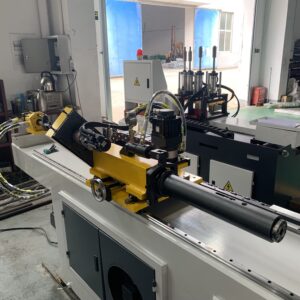A Comprehensive Guide for Beginners and Professionals
Bending pipe is a fundamental skill in various industries, from plumbing and construction to automotive and even artistic fabrication. A pipe bender is an indispensable tool for creating precise bends without kinking or damaging the pipe.
1. Understanding Pipe Benders: The Heart of the Operation
Before diving into the bending process, it’s essential to understand the different types of pipe benders available and their respective strengths and limitations.

1.1 Types of Pipe Benders
- Manual Pipe Benders: These are the most common type for smaller projects and DIY use. They rely on manual force to bend the pipe and are typically more affordable and portable. Manual benders are suitable for bending thin-walled pipes made of materials like copper, aluminum, and thin steel.
- Electric Pipe Benders: Powered by electricity, these benders offer the highest level of automation and precision. Electric benders can handle a wide range of pipe sizes and materials.
- Roll Benders: Unlike other types that bend the pipe at a fixed point, roll benders use rollers to gradually form the pipe into a curve.
1.2 Choosing the Right Bender
Selecting the appropriate pipe bender depends on several factors, including:
- Pipe Material: Different materials require different bending forces and techniques. For example, copper is softer and easier to bend than steel.
- Pipe Diameter and Wall Thickness: Larger diameter and thicker-walled pipes require more bending force.
- Bend Radius: The desired radius of the bend will influence the type of bender and bending method.
- Project Scope: For small DIY projects, a manual bender may suffice, while larger, more complex projects may require a hydraulic or electric bender.
- Budget: Pipe benders range in price from affordable manual models to expensive industrial-grade machines.

2. Preparing for the Bend: The Foundation for Success
Proper preparation is crucial for achieving accurate and clean bends. This stage involves several key steps:
2.1 Safety First:
- Wear appropriate safety gear: Always wear safety glasses, gloves, and appropriate footwear.
- Work in a well-ventilated area: Bending some materials can release fumes, so ensure adequate ventilation.
- Secure the bender: Properly mount or secure the pipe bender to a stable surface to prevent it from moving during operation.
- Understand the bender’s manual: Familiarize yourself with the specific instructions and safety guidelines for your chosen bender.
2.2 Measuring and Marking the Pipe:
- Determine the required bend angle and radius: Use accurate measuring tools and mark the pipe clearly to indicate the start and end points of the bend.
- Calculate the pipe length: Account for the material lost during bending. This is often referred to as the “bend allowance” or “take-up.” Consult your bender’s manual or online resources for specific calculations.
- Use a marker that won’t easily rub off: Choose a permanent marker or scribe to ensure your markings remain visible throughout the bending process.
2.3 Preparing the Pipe:
- Clean the pipe: Remove any dirt, grease, or debris from the pipe surface.
- Deburr the ends: Remove any sharp edges or burrs from the cut ends of the pipe to prevent damage during bending.
- Lubricate the pipe (optional): Applying a thin layer of lubricant to the inside and outside of the pipe can reduce friction and improve the bending process, especially for harder materials like steel.



